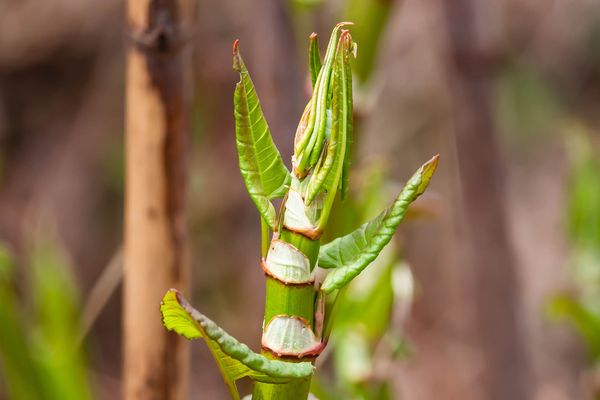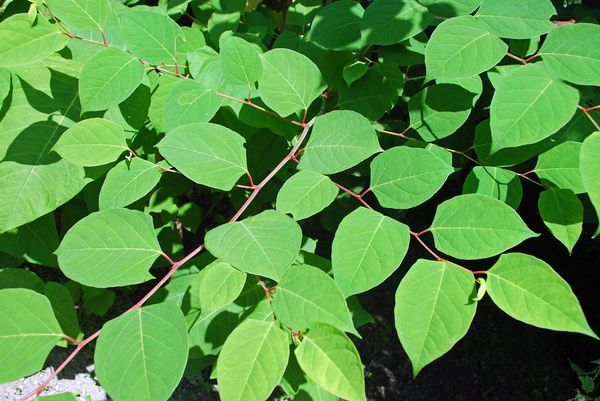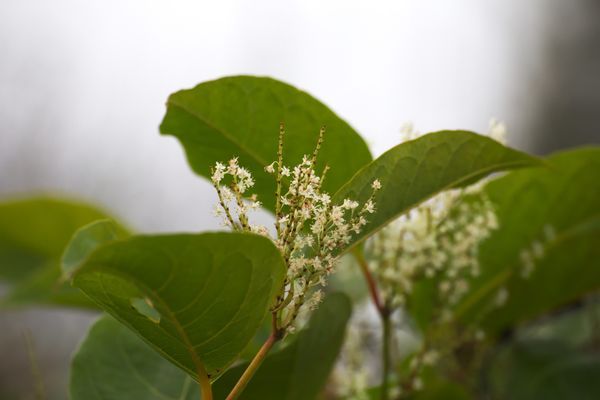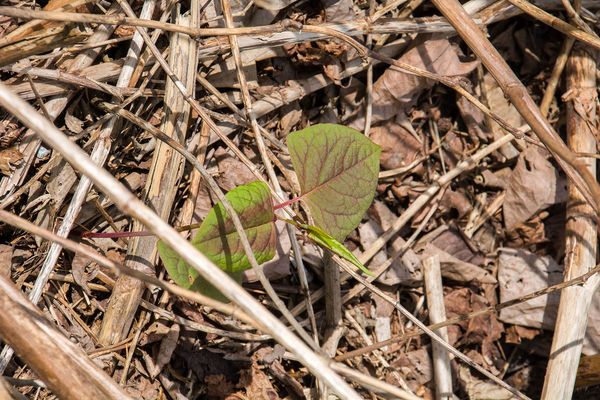It will push its way through expansion joints in concrete, cavity walls, weaknesses in the broken mortar between paving slabs or bricks and can also damage drains and sewers. While structural damage is rare in most residential situations, if left unchecked, a mature infestation of Japanese Knotweed can become critical. Get an expert to assess the situation as soon as possible.
What does Japanese Knotweed look like?
Japanese Knotweed looks quite different at its various growth stages throughout the year which can make it difficult to identify. The best way though is through the leaves which are heart or shovel-like in shape.
How to treat Japanese Knotweed
There are two ways to tackle the problem: herbicide treatment, or physical removal through excavation. The right solution will depend on a number of factors such as site conditions, budget, time scale and future plans for the site. An initial discussion with an eradication expert should help to clarify the extent of the problem. They will consider your situation and outline all the pros and cons of the options available to you.
In most cases, they will ask for photos but for larger areas and commercial development sites, a good contractor will be keen to come and see it for themselves before quoting. Ask them for a pre-sale site survey to confirm the extent of the problem and the cost to resolve it.
Check the work is guaranteed
Most companies offer a guarantee—check the small print—these guarantees are not yet insurance backed but may rely on professional indemnity insurance should things go wrong. Even more importantly, make sure you have a detailed post-treatment management plan with your chosen contractor. It's easy to negate a guarantee for instance by disturbing the soil within a year of herbicide treatment.
Can Japanese Knotweed come back?
Depending on the treatment method (more notably with herbicide treatments) there is a possibility of some minor regrowth, but this should be covered in any post-treatment management plan. Regrowth is initially weak and if dealt with swiftly and correctly, won't pose much of a problem.
Can a house sale proceed without treating Japanese Knotweed?
It is virtually impossible to secure finance on land or property with Japanese Knotweed on or adjacent to it. In most cases, this means there's no deal until the problem is dealt with. However, UK banks and lending institutions are usually satisfied if an approved contractor can guarantee the treatment of the problem. If a buyer is faced with the cost of eradicating the Japanese Knotweed, they will negotiate it off the price.
Are you Propertymark Protected?

Choosing the right estate agent will have a big impact on how quickly you sell your house so look for a Propertymark Protected agency. By using one of our members you are guaranteed to be consulting with a professional agent who will give you up-to-date advice and guidance.





